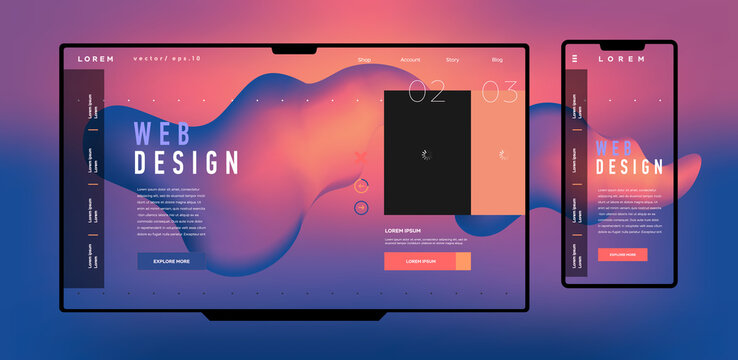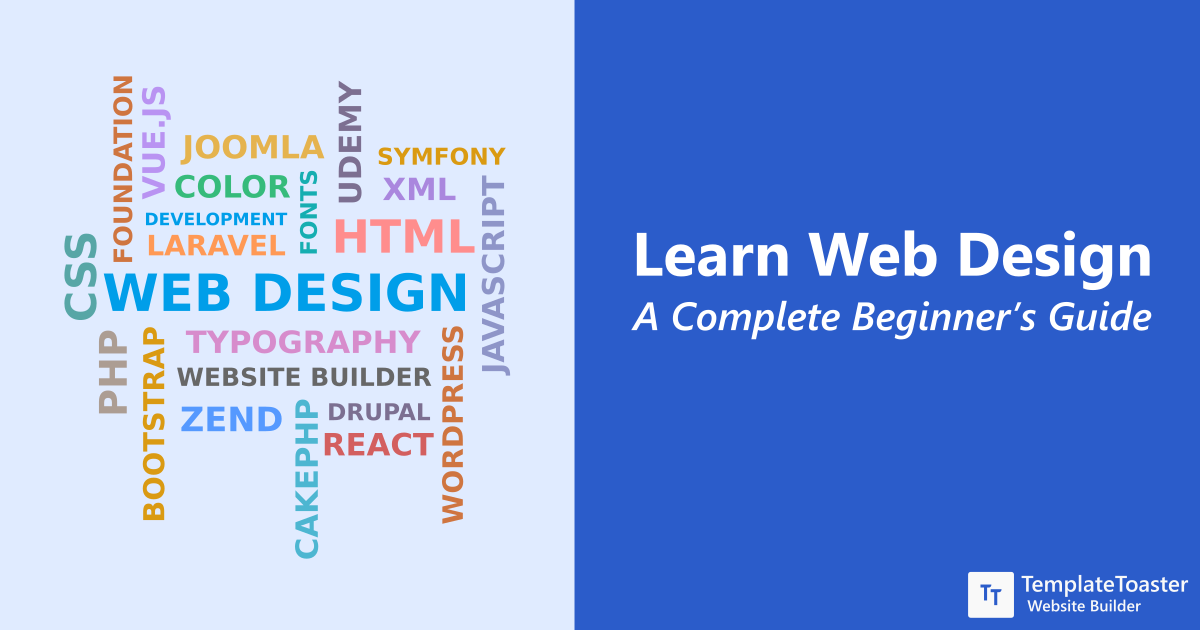Web Design London Ontario Deals for Every Business Size
Web Design London Ontario Deals for Every Business Size
Blog Article
Just How to Properly Incorporate Appearances and Functionality in Website Design
When creating an internet site, you require to strike a balance between aesthetic appeals and functionality. It's not simply about looking good; your layout ought to additionally offer a purpose and overview individuals efficiently. By concentrating on simpleness and intuitive navigating, you can produce an engaging experience. What elements truly boost usability while keeping visual charm? Let's explore the vital concepts that can result in a harmonious blend of elegance and feature.
Recognizing the Significance of Looks and Performance
Comprehending the equilibrium between visual appeals and functionality is essential for creating an efficient individual experience when you design an internet site. An aesthetically appealing website grabs interest, yet it's the performance that keeps users involved. If your site looks fantastic yet is challenging to navigate, visitors will rapidly weary and leave.Consider your target market and what attracts them in. You wish to produce a layout that shows your brand while making certain ease of use. Streamlined designs, instinctive navigating, and clear phone call to activity can boost both looks and functionality.

Concepts of Reliable Internet Layout
To develop an efficient website design, you need to abide by several essential principles that boost both individual experience and visual charm. First, prioritize simpleness; a clean format assists individuals browse quickly. Utilize a consistent color pattern and typography to preserve coherence throughout your site. This cultivates experience and trust.Next, assure your style is responsive. Customers access web sites on numerous devices, so your design should adjust perfectly. Take note of aesthetic hierarchy; highlight crucial elements with size, shade, or positioning to direct users' focus.Finally, incorporate adequate white space. It stops mess and makes web content extra absorbable. Remember, effective web style equilibriums appearances and functionality, so every layout selection ought to offer a purpose. By complying with these principles, you'll develop a site that's not just visually appealing however likewise straightforward, inevitably keeping visitors engaged and urging them to return.
Focusing On Individual Experience
When focusing on customer experience, you'll intend to start by recognizing what your individuals absolutely need. Simplifying navigation layout can make a massive difference in just how easily they find what they're seeking. Improving visual pecking order aids assist their focus to the most important components on your website.
Recognizing User Requirements
Recognizing customer requirements is necessary for creating an interesting web experience that maintains visitors returning. To achieve this, you have to identify the objectives and preferences of your target market. Beginning by performing customer study, like surveys or interviews, to collect understandings on what individuals worth most. Pay interest to their pain factors and difficulties when communicating with comparable web sites. This information enables you to customize your style, making sure functionality straightens with individual expectations. Additionally, consider producing individual personalities that stand for various sectors of your target market, helping you visualize their requirements throughout the layout process. When you prioritize recognizing user requirements, you produce an internet site that not only looks great however also delivers a seamless, satisfying experience that fosters commitment.
Streamlining Navigating Design

Enhancing Aesthetic Power Structure
A solid visual pecking order is vital in assisting individuals through your website and guaranteeing they engage with key content. To attain this, make use of dimension, spacing, and color strategically. Make essential elements like headings bigger and bolder than body text, attracting focus promptly. Use contrasting colors to highlight contact us to activity, encouraging clicks. In addition, utilize ample white room to different sections, making material digestible and inviting.Consider the circulation of info; arrange components practically, leading users' eyes from one indicate the following. Usage aesthetic hints, like lines or arrows, to route attention. By focusing on visual hierarchy, you improve customer experience and enhance the chance of conversions, ensuring your web site is both cosmetically pleasing and functionally reliable.
Color Theory and Its Influence on Usability
While selecting the best shades for your site might appear like a minor information, it substantially influences functionality and customer experience. Color impacts just how users view information and can impede or boost navigation. Contrasting shades can assist important elements stand out, making it much easier for site visitors to discover what they need.Additionally, consider the psychology of shades: blue typically inspires depend on, while red produces urgency. Knowing your target market can guide your shade choices, guaranteeing they reverberate well.Moreover, regular color pattern assist build brand identification, making your website much more unforgettable. Be careful-- as well several shades can bewilder individuals. Adhere to a limited combination that matches your web content and keeps clarity.Incorporating access is likewise crucial; validate your color mixes get along for those with aesthetic disabilities. By thoughtfully using color theory, you'll improve functionality and produce an extra interesting user experience.
Typography: Balancing Style and Readability
Shade choices set the stage for your web site, but typography plays a just as important role in improving customer experience. You desire your message to connect clearly while likewise showing your brand name's character. Start by picking fonts that are not only eye-catching yet likewise legible. Sans-serif typefaces usually function well for digital displays, as they're simpler to review at different sizes.Maintain a pecking order by utilizing different typeface sizes and weights; this guides customers with your material effortlessly. Take into consideration line spacing and letter spacing; also limited can irritate visitors, while as well loose can disrupt the flow. Limit your typeface options to 2 or 3 to maintain the design cohesive.Finally, always evaluate your typography across different tools and internet browsers. What looks great on one screen might not on another. Stabilizing style with readability warranties that your message reverberates, keeping your audience involved and educated.
Receptive Layout: Making Aesthetics Service All Tools
To ensure your website looks great on any tool, you'll need to accept responsive design concepts. This technique assurances your site adapts to various screen sizes, giving a perfect customer experience. Beginning by utilizing liquid grids and flexible pictures that scale effortlessly. Rather of fixed dimensions, select percentages and family member devices, allowing your design to adjust dynamically.Next, carry out media queries in your CSS. These let you use various designs based upon device features, like screen size. In this manner, you can preserve visual charm while guaranteeing functionality.Don' t neglect concerning touch targets; ensure buttons and links are easy to tap on smaller screens. Focus on vital content, so individuals can quickly navigate your site despite their tool. By focusing on these components, you'll develop an interesting, aesthetically appealing experience that fulfills the demands of all customers, whether they get on a tablet, desktop, or mobile phone .
Performing Functionality Screening for Continual Renovation
To boost your website design, you require to establish clear usability objectives that align with individual requirements. By conducting user tests, you can collect important responses on exactly how genuine individuals interact with your site. Examining these outcomes will help you make notified enhancements and produce an extra effective individual experience.
Specifying Use Goals
While aesthetic appeals can attract users in, defining functionality goals is essential for guaranteeing their experience continues to be satisfying and smooth. Beginning by identifying what you want users to accomplish on your website (website design london Ontario). Consider their behaviors, jobs, and requirements. Are they trying to find info, purchasing, or enrolling in a newsletter? Establish clear benchmarks to measure success, like task conclusion prices or time on job. Prioritize user-friendly navigating, accessible web content, and responsive style to enhance functionality. Consistently take another look at these objectives as individual expectations progress. By defining usability goals, you create a structure for evaluating and boosting your website's efficiency. This focus on usability not only improves user fulfillment but also enhances the overall efficiency of your layout
Conducting User Tests
Conducting user tests is vital for fine-tuning your web site and guaranteeing it fulfills your audience's demands. Beginning by recognizing your target customers and developing a test plan that outlines your objectives. Make use of a mix of qualitative and measurable techniques, such as surveys, meetings, and task-based monitorings, to collect thorough feedback. Welcome individuals to browse your site while you observe their interactions and note any kind of troubles they run into. Urge open discussion to capture their ideas and sensations about the design and performance. Keep sessions short and concentrated, guaranteeing you cover essential locations without frustrating individuals. Lastly, ensure to record all searchings for, as this info will be indispensable for making informed layout choices that improve both appearances and use.
Assessing Test Outcomes
How can you effectively examine the results of your use tests to drive continual improvement? Begin by categorizing comments right into common motifs. Look for patterns in customer habits that highlight pain factors or locations for enhancement. Use quantitative data, like task completion prices and time on job, to measure usability fairly. Don't fail to remember to consider qualitative understandings from user comments; they usually reveal underlying concerns that numbers can't show. Focus on one of the most impactful findings and develop actionable items for your design team. Remember, it's about repeating-- apply adjustments, after that examination again. This cycle of testing, evaluating, and refining helps you equilibrium aesthetics and performance, guaranteeing your internet site meets individual needs successfully while keeping aesthetic allure.
Frequently Asked Questions
Just how Do I Choose the Right Color Palette for My Site?
To select the best color combination for your internet site, consider your brand name's individuality, target market, and psychological influence (website design london Ontario). Usage shade psychology, develop consistency, and warranty readability. Test combinations to see what reverberates ideal with visitors
What Tools Can Assist With Web Design Appearances and Capability?
You can use devices like Adobe XD, Figma, and Map out to enhance your website design's appearances and functionality. These systems offer user-friendly user interfaces, cooperation features, and pre-made design templates to simplify your imaginative procedure and boost your designs.
Exactly How Can I Incorporate Animations Without Compromising Capability?
To integrate animations without jeopardizing functionality, prioritize refined effects that enhance customer experience. Usage CSS animations for smoother communications, warranty quick lots times, and test on numerous tools to maintain performance while including visual appeal.
What Prevail Errors to Stay Clear Of in Website Design Appearances?
When developing, stay clear of messy designs, inadequate shade choices, and irregular font styles. Don't overlook mobile responsiveness, as it can estrange customers. Confirm your layout straightens with your brand name, creating a seamless experience that involves site visitors successfully.
How Often Should I Update My Internet site's Design for Optimum Looks?
You should update your website's layout every 1-2 years to stay on par with fads and preserve suitable aesthetic appeals. Consistently restoring visuals helps engage assurances and site visitors your website continues to be easy to use and appealing. When you create a site, recognizing the balance in between appearances and performance is vital for creating an effective customer experience. To develop an effective internet layout, read more you need to stick to numerous crucial principles that enhance both user experience and aesthetic allure. Customers accessibility internet sites on different gadgets, so your design ought to adapt perfectly. When prioritizing customer experience, you'll desire to start by recognizing what your customers truly need. Begin by performing user research study, like surveys or meetings, to collect insights on what users worth most.
Report this page